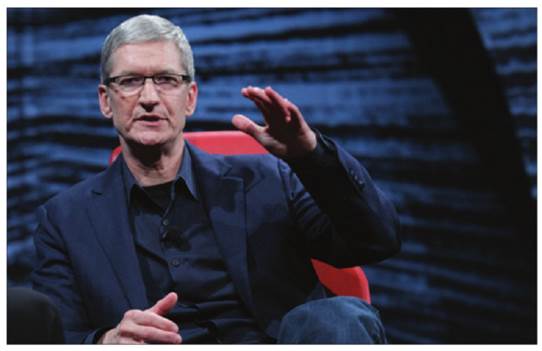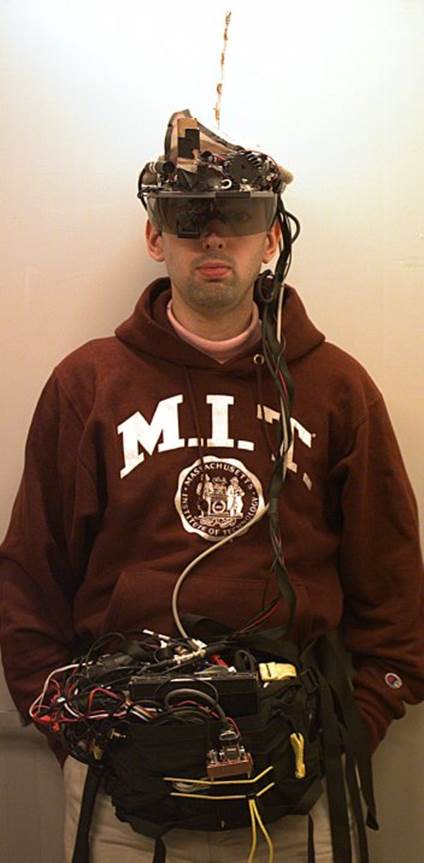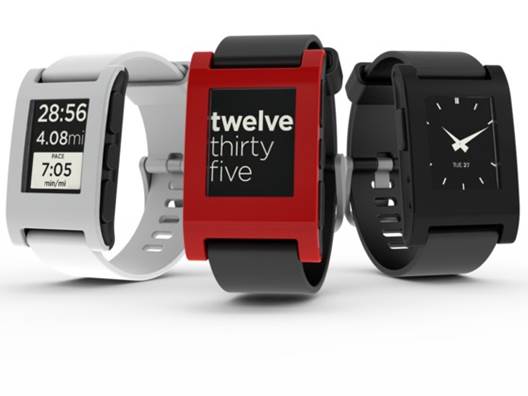Apple’s Plans
Apple rarely gives anything away when it
comes to its future plans. In fact, the company has a phrase ready for anyone
who asks about such matters: “We do not comment on future products”. However,
when it comes to the iWatch - a smart watch that Apple is said to be working on
- the usual rules don’t appear to apply. At a recent shareholder event Apple
CEO Tim Cook said: “Obviously we’re looking at new categories; we don’t talk
about them, but we’re looking at them.”
Prior to this there’d been speculation
that, in an attempt to prove it was innovating, Apple had leaked details about
the iWatch to Bloomberg. Rumors normally originate from the company’s suppliers
in Asia, but in this case it was Bloomberg sources that revealed Apple has a
team of 100 designers working on the watch. It even had details of the Apple
executives heading up the project.

Apple
CEO Tim Cook said: “Obviously we’re looking at new categories”
Soon after, a report in the New York Times
appeared, claiming Apple is experimenting with wristwatch-like devices made of
curved glass. Coincidence?
In the same month, the US Patent &
Trademark Office published an Apple patent application, describing a
bracelet-style device with a flexible display that could snap around the wrist,
adding further evidence that the company is interested in making an iWatch.
The patent describes a “wearable video
device” or “slap bracelet”, that connects to a “portable electronic device” via
Wi-Fi or Bluetooth. It allows the consumer to “accomplish a number of different
tasks including adjusting the order of a current playlist, or reviewing a list
of recent phone calls,” states Apple.
“A response to a current text message can
even be managed given a simple virtual keyboard configuration across the face
of the flexible display.”
Power Up
The patent even reveals a way in which the
battery could be divided into portions that are placed in disparate locations
in the device. Apple suggests the device could be powered by a solar panel or a
kinetic source that generates power from being worn on the wrist. The company
notes that, in addition to managing texts and phone calls, and giving access to
music playlists, the wearable video device could be used for viewing maps.
It’s difficult to read the patent
description without concluding that the company is talking about a watch. This
isn’t the only patent filed by Apple that could relate to the iWatch. Published
at the end of January, and titled “Communicating location information between a
portable device and an accessory,” a separate patent covers the process of
exchanging GPS data from a portable media device, such as the iPhone or iPad,
with an accessory.
The patent describes ways in which devices
that lack GPS receivers could share location information with an iPhone or
iPad.
Apple Patent Watch
Along with its patent application for a
‘snap bracelet’, Apple has filed patents in the wearable technology field
including one that refers to smart running shoes. Another patent describes
sensor equipped “personal items” including an accelerometer, humidity or
temperature sensor, EKG sensing device, weight-sensing detector, and chemical
detector. Apple’s patent suggests these sensors could be integrated into
anything, to capture everything you do and changes in your environment.

Apple’s
patent suggests these sensors could be integrated into anything, to capture
everything you do and changes in your environment.
The Competition
Not wanting to be left out (or accused of
copying) a Samsung executive has jumped on the wearable technology bandwagon
and claimed that the company is also working on its own smart watch product.
“We’ve been preparing the watch product for
so long. We are working very hard to get ready for it. We are preparing
products for the future, and the watch is definitely one of them,” enthused Lee
Young Hee, executive vice president of Samsung’s mobile business.
Samsung and Apple will by no means have the
smart watch market to themselves, though. There are already a number of players
with smartphone-compatible watches, such as the Pebble (see below). Its
developers have worked out how to present some of the useful functions of a
phone through the watch’s face without requiring users to take their iPhone out
of their pocket. The Pebble takes most of its data via Bluetooth from your
iPhone or Android device, which means the watch doesn’t need a powerful
processor, huge amounts of memory or a powerful battery.
Pebble isn’t worried about the heightened
speculation surrounding the rumored iWatch, though. Company founder Eric
Migicovsky believes all the talk about Apple’s smart watch is bringing the idea
of wearable technology to the attention of consumers.
Anther explorer in the watch sector of
wearable technology is Thalmic Labs, which recently introduced MYO ($149,
getmyo.com), a wrist cuff that controls computers and other devices through
gestures. Co-founder Stephen Lake noted that people don’t necessary want to
speak instructions when in public, and he believes that gestures are a better
means for input.

Professor
Steve Mann developed the world’s first wearable technology systems equipped
with video to augment daily life.
This Sporting Life
Sports and activity trackers account for
the largest chunk (61 per cent) of wearable technologies shipping today. You
can already get smart activity trackers, from companies such as Fitbit and
Nike. There’s also sports gear, including Underarmour’s E39 T-shirt
(www.underarmour.com), equipped with an accelerator, heart and breathing
monitors.
BodyMedia, is making devices that monitor
health data, while researchers from Orange Medical are involved in exploring
the potential of diabetes, heart rate and other medical device monitors in an
attempt to help doctors keep an eye on the health of their patients. Another
firm, Sorin, offers heart monitoring systems that work with a smartphone to
monitor patients equipped with a pacemaker
Wearable technology is also hitting
fashion. International Fashion Machines has been developing an intelligent
fabric capable of carrying electronic instruction; meanwhile Stamp Shoes offers
a pair of GPS-enabled brogues, which could help heavy drinkers get home from
the pub.
Wearable technology is, however, nothing
new. University of Toronto professor, Steve Mann, is regarded as the father of
the wearable computer.
He built systems in the 1970s and early
1980s, including personal sensing, biofeedback and multimedia devices.
In 1981, he designed and built a
backpack-based multimedia computer system with a head-mounted display. Mann has
worn some form of wearable computer every day ever since.
Recently published patents suggest
Microsoft has also quietly been developing its own video glasses, while Olympus
is also working to produce its own answer to Google Glass.
Pebble Watch
The Pebble smart watch hosts a 144 x
168-pixel black-and-white ePaper display, a vibrating motor, magnetometer,
accelerometer and ambient light sensors. It communicates with your iPhone over
Bluetooth and supports a range of apps. The watch also controls music playback,
including support for track information, and alerts you to incoming calls,
emails and messages, displaying messages or Caller ID information on its
screen. Battery life is good too, with a claimed seven or more days between
each charge.

The
Pebble smart watch hosts a 144 x 168-pixel black-and-white ePaper display, a
vibrating motor, magnetometer, accelerometer and ambient light sensors.